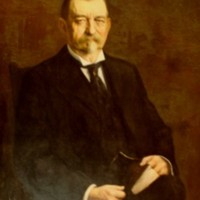Browse Exhibits (21 total)
test

This is a test exhibit, used to demonstrate the basics of building an exhibit in Omeka on the Digital History 511 website.
Advertising the War: How Business Bought In.
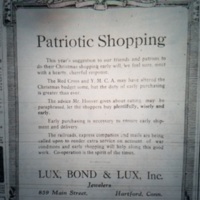
During a convention for advertising, speaker Joseph Appel stated, "Advertising is not to sell, but to help people buy...We stand in the shoes of the customer. We are outside, not behind the counter. We are councelors for the public." The Progressive Era, the 1890's through the 1920's, saw a concerted effort to separate ad men from suppliers, and to align them with consumers. This approach had never been done before. Instead of selling a product, they were recommending them. Rather than gear ads for the company, they were made for the sophisticated reader.
Six days after the official American entry into the War to End All Wars, President Woodrow Wilson signed into existence the Committee on Public Information (CPI), also known as the Creel Committee. It consisted of mainly of Mr. Creel, and the Secretaries of State, Navy, and War who were ex-facto members. The Secretaries and had little impact, choosing to allow Mr. Creel mostly carte blanche in his Committee. In his post-war book detailing the CPI claimed that what he was doing was not propaganda. Creel stated that "In no degree was the Committee an agency of censorship, a machinery of concealment or repression. Its emphasis throughout was on the open and the positive. At no point did it seek or exercise authorities under those war laws that limited the freedom of speech and press. In all things, from first to last, without halt or change, it was a plain publicity proposition, a vast enterprise in salesmanship, the world’s greatest adventure in advertising." I will leave it up to viewer if these are propaganda items or not.
Important changes happened in the Great War, little known was how the art of propaganda (if we dare to call it that) subtly increased sales, fostered support for the war and pushed the public to sacrifice. This is a brief pictorial overview of business advertisements in local Connecticut newspapers in the Christmas Holiday season of 1917. The date range was chosen because that time of the year advertisements were more numerous and the troops were finally "Over There". The Advertising the War: How Business Bought In Exhibit will focus on involving readers and customers in the war effort, and in the background necessary to come to their own conclusions.
Spies and Espionage in Connecticut During the First World War
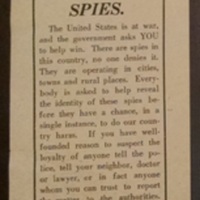
During the First World War, Connecticut was a major manufacturer of materials vital to the war effort. Due to its manufacturing importance, the fear of spies and sabotage were real threats and had to be addressed by police makers. During the war years, while industrial sabotage was a real threat, the view of sabotage was expanded to include war dissenters and anyone or anything that can harm the war effort. The citizens of Connecticut were rallied to be part of tht effort. While not engaged in actual combat, they became the eyes and ears of the govenment. A Connecticut Council of Defense was established to orchestrate the hunt for spies and saboteurs. Extreme nationalism and suspicion of neighbors became the driving force and justification in Connecticut’s attempts at counter-espionage.
Women and Dress: Women's Contributions To WWI Efforts In Connecticut
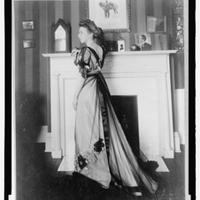
Although the United States did not enter the World War I until 1917, a year before the war ended, great numbers of women stepped up to “Do their Part” supporting their male counterparts. Women from all social classes utilized their intellectual and physical strengths and actively participated in wartime efforts. The absence of males working in business, manufacture, agriculture and homes meant that women had to take their place to maintain a strong economy.
The turn of the century in the United States ushered in many changes including the way in which women were perceived by males. Reformist movements drove changes in fashion and attitude towards women’s mental capabilities and physical appearance. Dress Reform pushed for changes in women’s dress to eliminate the physically constricting corset and layers of fabric in women's clothing. Dress Reformers advocated spending time outdoors and participating in physical activity. Victorian dress had been designed to prevent women from moving freely or from participating in outdoor activities such as riding bicycles or playing sports. Along with drss reform new styles of underclothing clothing were coming into fashion, including Bloomers, which were very popular in America.
The outbreak of World War I, and America’s entry into the conflict resulted in greater numbers of women in the workforce and their active participation wartime activities. Women became involved in all aspects of the American economy. Their work outsied the home brought about a change in women’s spheres and helped advance dress reform and the women’s suffrage movement.
This exhibit will demonstrate how “Dress” was a means for women to contribute to the World War I wartime effort. It will focus on the women of all social classes and ages in the state of Connecticut. The intent is to illustrate the various ways in which “dress” was used by women to help fight the war.
The first part of this exhibit will focus on women's fashion in World War I. The new "war time" styles reflected rationing of textiles such as sil and wool for the solidiers. American women's fashion changed from highly detailed to simple dress using cotton instead of luxurious textiles and decorative emroidery. The new style used fewer materials and mimicked the military uniforms to serve as a symbol of unity and equality. There were changes in the style of women’s uniforms due to the physical nature of their newfound jobs as doctors, nurses, Red Cross workers and in the Army and Naval reserves.
The word “dress” is further interpreted to include women’s contributions to the wartime effort through making “dress” such as knitting, sweaters and socks and other articles of clothing for soldiers and Belgian refugees to be sent abroad. Women in WWI started making surgical “dressing” and learning to “dress” wounds in Red Cross classes for use at home and abroad.
Lastly, the window“dressings”of department stores in Hartford showcased wartime slogans and posters to encourage women to participate, contribute monetarily in war bonds and buy “comfortable shoes to participate in Red Cross parades” to express nationalist pride and unity.
CREDITS:Bridgeport Press, Dudley Collection, State of Connecticut Digital Archive,Connecticut Historical Society, Hartford Courant, Library of Congress
Firearm Manufacturing in Connecticut during the Great War
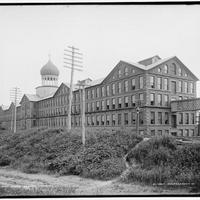
This exhibit will explore the role Connecticut factories had in firearm production during the Great War. From companies like the Colt Manufacturing Company in Hartford to Winchester Repeating Arms in New Haven, Connecticut factories were responsible for a significant portion of the United States weapon supply.
Not only did Connecticut factories have a significant impact on the war effort, but urban cities became increasingly industrial during World War I, seeing a drastic increase in the percentage of workers employed in industrial jobs.
The technological innovations in weapons during World War I were beyond anything ever seen in years prior. In Hartford and New Haven, designs for automatic and semi-automatic weapons were being created, and weapons like the Colt Vickers machine gun changed the face of war.
In this exhbit, one will be able to see images of the factories, weapons, and workers that made this historical impact, along with the newspaper articles and advertisements that demonstrate the cultural impact of companies like Colt and Winchester.
Exhibit Created by James Annunziato
Armistice and Veterans Day in Connecticut
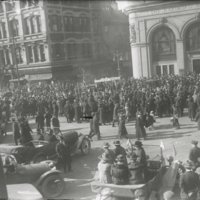
This exhibit focuses on the end of World War One, specifically the Armistice and how it became Veterans Day. Newspaper articles and photographs from Hartford, Connecticut are used in order to understand how the public received the Armistice and how their views about this specific day changed through out history. In order to fully express the attitudes of the American people the tone of the exhibit is primarily that of American Pride.
A Look Back: Hartford During World War I

Beginning in 1914, the world descended into chaos as the First World War erupted. While the United States did not enter the conflict until 1917, it still was effected by World War I. Connecticut, like most of the country, worked in overdrive to assist the demand.
Hartford especially felt pressure as Connecticut’s capital to ensure organization and communication worked throughout the state to assist the country in mobilization. Hartford was active in various aspects of World War I, specifically in the militarization of the state.
Industry in Connecticut during World War I
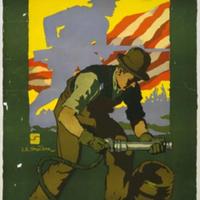
A digital exhibit on World War I's impact on industry in Connecticut. Looking specifically at Colt Manufacturing Company, Landers, Frary, & Clark, and the role of women workers. Connecticut had already been known for its multitude of manufacturers and the influx of war contracts expanded these industries to new levels.
Exhibit created by Chris Menapace.
